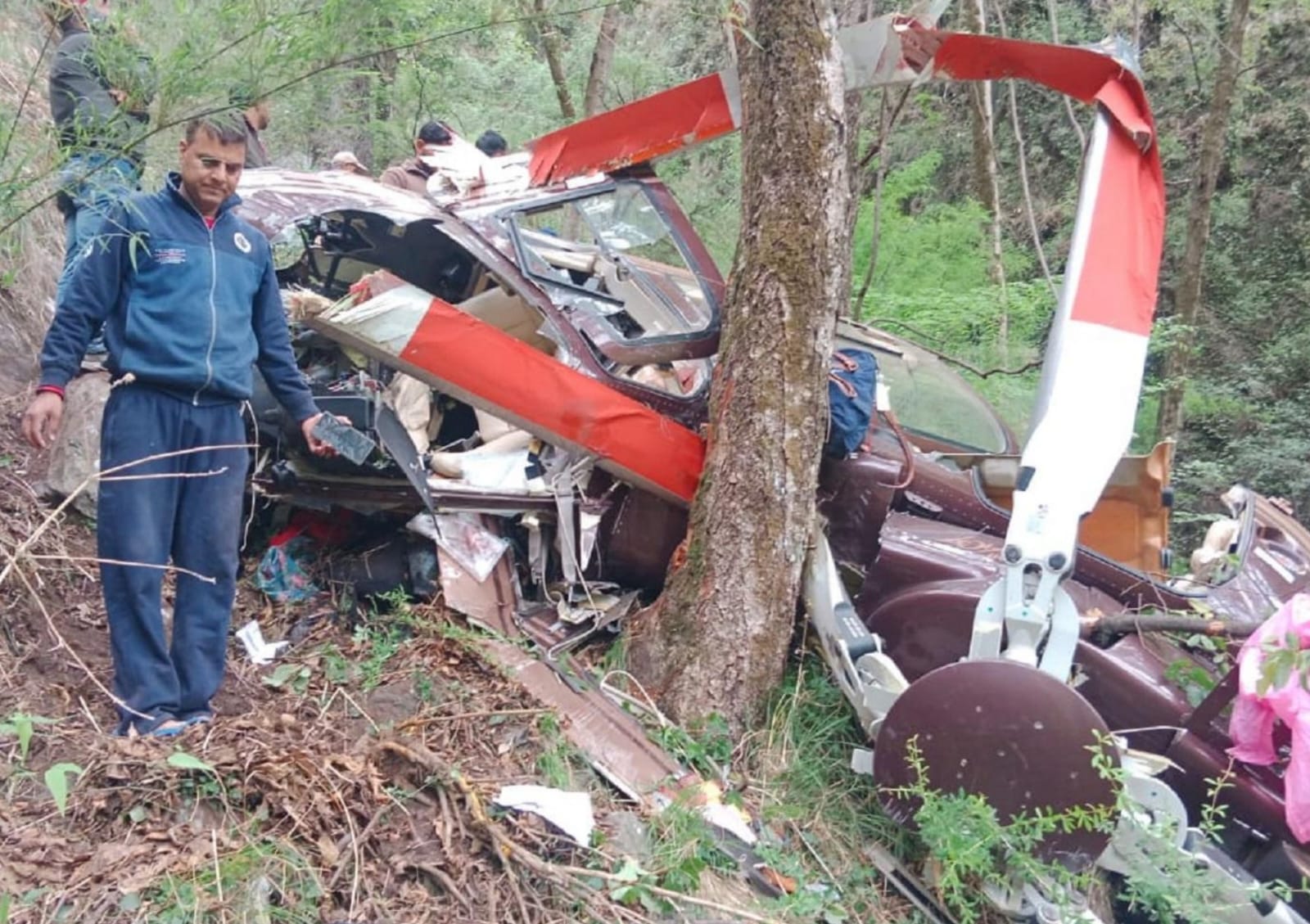
Uttarakhand:
A preliminary report released on Sunday, 20 July 2025, by the Aircraft Accident Investigation Bureau (AAIB) has shed light on the tragic helicopter crash in Uttarkashi that claimed six lives on 8 May. According to the five-page document, the Bell 407 helicopter, operated by Aerotrans Services Pvt Ltd, began its charter flight at 8.11 am from Kharsali helipad en route to Jhala when disaster struck.
The AAIB found that approximately 20 minutes after take‑off, the helicopter began to descend from its assigned altitude. The pilot attempted an emergency landing on the Uttarkashi–Gangotri Road (NH 34) near Gangnani. Tragically, during this manoeuvre, “the helicopter’s main rotor blade struck an overhead fibre cable running parallel to the road.”
The collision proved catastrophic. The rotor’s impact with the cable damaged roadside metallic barricades, after which the aircraft “tumbled down the hillside” and ultimately came to rest against a tree roughly 250 feet deep into a gorge.
The chopper, powered by a Rolls-Royce engine and manufactured in 2008, was carrying one pilot and six passengers. The crash completely destroyed the aircraft, though thankfully there was no fire. The pilot and five passengers were killed; one passenger survived with serious injuries.
During a hill familiarisation check flight earlier that morning, the helicopter had completed a dual-pilot flight from Sahastradhara helipad without incident or technical issues. This was followed by the chartered flight, on which the accident occurred.
The AAIB confirmed in its report that the aircraft was destroyed in the crash, but no post‑impact fire ensued. Accredited representatives from the US National Transportation Safety Board and Canada’s Transportation Safety Board have joined the ongoing inquiry to aid in determining the root cause.
The Uttarkashi incident is part of a string of helicopter accidents along the Char Dham pilgrimage route. In June, another fatal crash occurred near Kedarnath, claiming seven lives, prompting the Uttarakhand government to form a committee chaired by home secretary Shailesh Bagauli. The group is tasked with developing standard operating procedures for helicopter safety and is expected to submit its recommendations by 15 August 2025.
AAIB’s current focus includes analysing maintenance records, flight data, weather conditions, and pilot decision-making processes. With technical teams from international aviation authorities now involved, authorities hope to draw vital safety lessons. The final report, including formal safety recommendations, is anticipated in the coming months.
This tragic event underscores the heightened risks of low-altitude emergency manoeuvres, particularly in mountainous terrain intersected by cables and other hazards. Piloted flights in such areas are drawing renewed scrutiny, with calls for improved operational protocols to safeguard passengers making the annual Char Dham pilgrimage.